The Daily Guardian is now on Telegram. Click here to join our channel (@thedailyguardian) and stay updated with the latest headlines.
For the latest news Download The Daily Guardian App.
Published
8:54 am ISTon
By
Ashish SinghNEW DELHI
Ace athlete of the Indian Navy, M.P. Jabir, POCOM(Tel) has qualified for the Tokyo Olympics in 400m hurdles after he clocked 49.78s to win gold at the recently concluded Inter-State Athletics Championships in Patiala. Jabir qualified through the World ranking quota where there are 14 spots available. The 25-year-old Naval sailor hails from Malappuram, Kerala. He is currently ranked 34th in the World Athletics’ Road to Olympics rankings where 40 athletes qualify. When he competes in the Tokyo Olympics, Jabir would be the first Indian male athlete to participate in the 400m hurdles in Olympics.
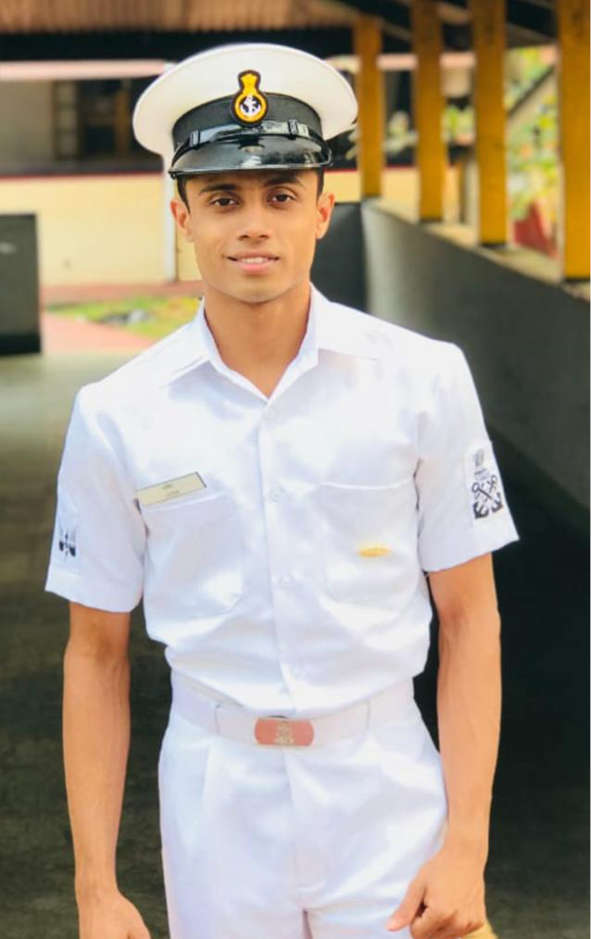
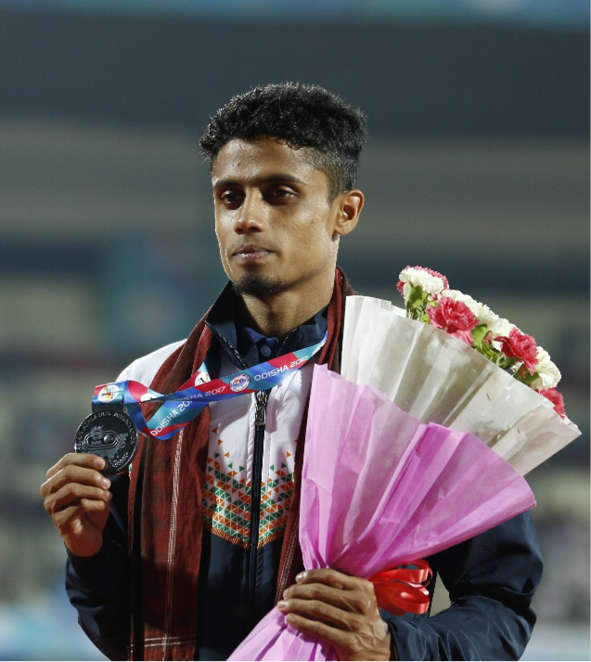
PT Usha, the legendary athlete from Kerala competed in the 400 m hurdles at the Los Angeles Olympics. That makes Jabir, the second from the state to compete in the same event in Olympics. Jabir has participated in many National and International Athletic championships representing the Indian Navy and the Services earning many laurels.
The athlete is in the final stages of preparation for the Tokyo Olympics. The Inter-State Meet was the last Olympic qualification event for the Tokyo Games. In the absence of major tournaments due to restrictions imposed by the COVID-19 pandemic, Jabir’s last competitive race was in 2019. However, with regular practice and support from the Naval Training team, Jabir was able to continue his training sessions avoiding any injuries and begin preparations for the Olympics.
The Daily Guardian is now on Telegram. Click here to join our channel (@thedailyguardian) and stay updated with the latest headlines.
For the latest news Download The Daily Guardian App.
Published
18 mins agoon
July 3, 2021By
Ashish SinghNEW DELHI
Indian Navy’s hydrographic survey ship Sarvekshak successfully completed survey action around the site of ill-fated MV X-Press Pearl on Friday and handed over the survey data to the Sri Lankan authorities. The ship equipped with the state of the art survey equipment including the side Scan Sonar, was deployed on 25 June at the request of Government of Sri Lanka.
The survey operations in three search areas around the wreck was progressed in coordination with Sri Lanka Navy and Sri Lanka’s National Aquatic Resources Research and Development Agency (NARA). The ship undertook a total of 807 miles of Side Scan Sonar survey and identified 54 prominent underwater debris from MV X-Press Pearl and also one additional uncharted wreck. The survey of the wreckage area would facilitate issuance of advisory to both mariners and fishermen, and subsequent removal of debris by Sri Lankan authorities, thereby ensuring safety of navigation for marine traffic operating through Colombo port.
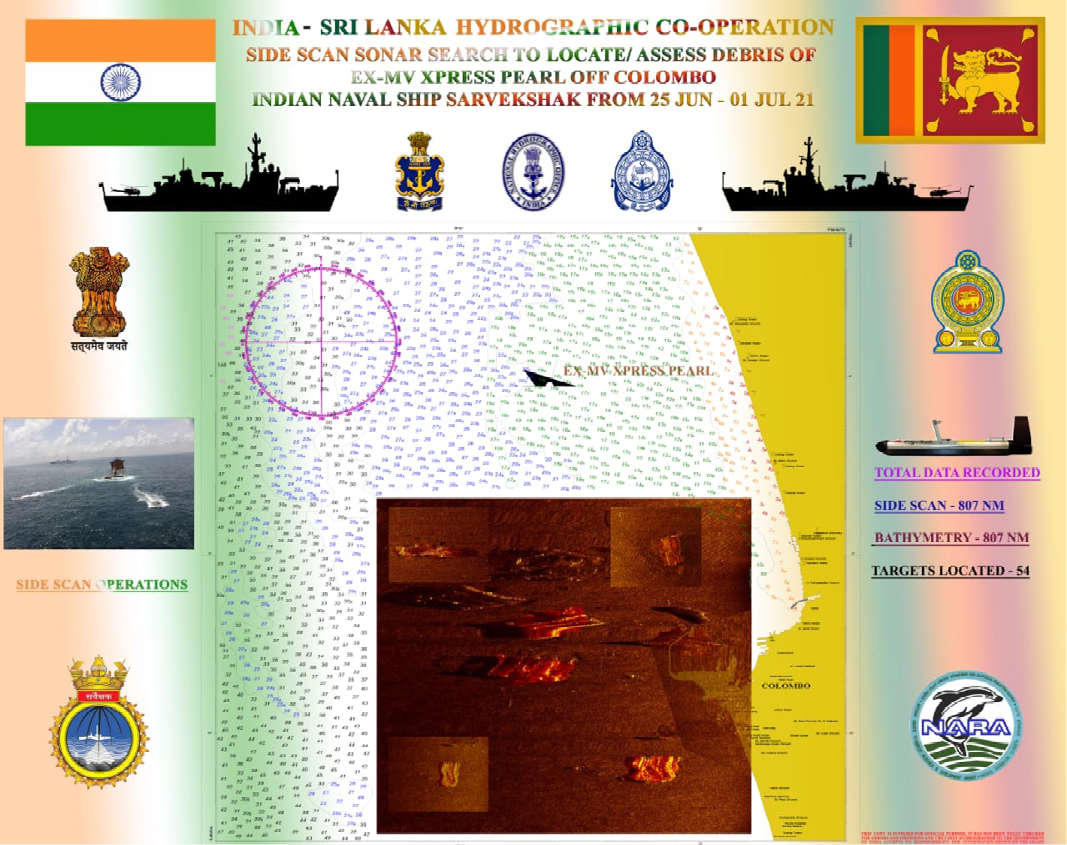
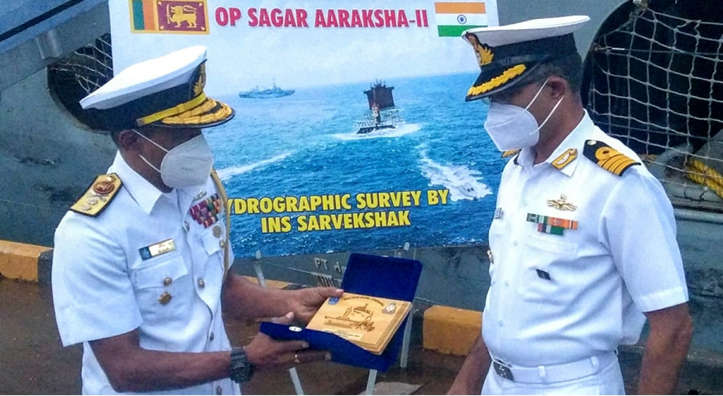
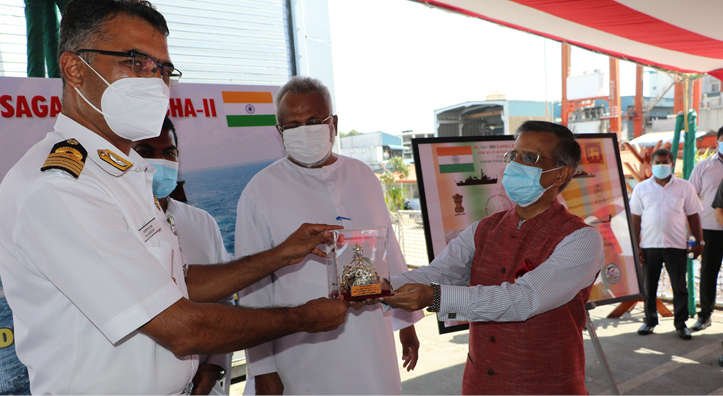
INS Sarvekshak, is based at Southern Naval Command at Kochi and is fitted with state-of-the-art survey equipment like Deep Sea Multibeam echo sounder system, Side Scan Sonar, Sound Velocity Profilers, and a fully automated digital surveying and processing system. In addition, the ship carries a Chetak helicopter which was extensively deployed during the survey for aerial recce. In the past, INS Sarvekshak has also undertaken foreign cooperation surveys in Sri Lanka, Mauritius, Seychelles, Tanzania and Kenya. India and Sri Lanka share a strong bond and partnership, and this survey operation undertaken has been another milestone in strengthening cooperation and understanding between the two countries and reinforcing the shared values.
Published
22 mins agoon
July 3, 2021By
Ashish SinghNEW DELHI
The National Cadets Corps (NCC) will be inviting youth delegations of 25 countries from across all six inhabited continents to participate in the Republic Day 2022 celebrations. Out of these, youth delegations would be invited for the first time from 15 countries – USA, Canada, UK, France, Japan, Oman, UAE, Brazil, Argentina, Australia, New Zealand, Mauritius, Mozambique, Nigeria and Seychelles. They will be in India from January 15-29, 2022, as part of ‘Azadi ka Amrit Mahotsav’, commemorating 75 years of India’s Independence.
These 15 countries will be in addition to the existing 10 foreign countries – Bangladesh, Nepal, Bhutan, Russia, Kazakhstan, Singapore, Kyrgyz Republic, Sri Lanka, Maldives and Vietnam – with whom NCC already has an ongoing Youth Exchange Program. All together, approximately 300 cadets of National Cadet Corps/equivalent/youth organisations from these 25 countries would be invited to participate in the celebrations. As part of the visit, ten cadets/youth, along with their supervisors, of each of the 25 countries, will attend important events of Republic Day celebrations.
NCC Republic Day Camp is the most prestigious annual event of NCC and provides several life-time experiences for participating youth including the Republic Day Parade and the Prime Minister’s NCC Rally. They will also call on top dignitaries, including the President and the Prime Minister. Visits to various places of historical and cultural importance have also been planned, as part of the program. The cadets would be exposed to activities like Yoga and Ayurveda.
For the first time, the cadets/youth participating in the NCC Republic Day camp from foreign countries will compete to get selected based on a selection process to be organised by NCC in those countries. The selection process will be organised in these countries in association with Ministry of External Affairs, Defence attaches in Indian Embassies in these countries as well as the youth organisation of that country. Partner youth organizations have also been identified. The selection competition will adjudge candidates on their knowledge about India, its achievements in last 75 years, culture and people.
The initial work for selecting the youth from participating countries has begun. All the concerned countries have been requested to provide wide publicity to the Quiz competition and ensure that maximum youth are given the chance to participate in the program. The broad timeline proposed for the selection process is as follows:
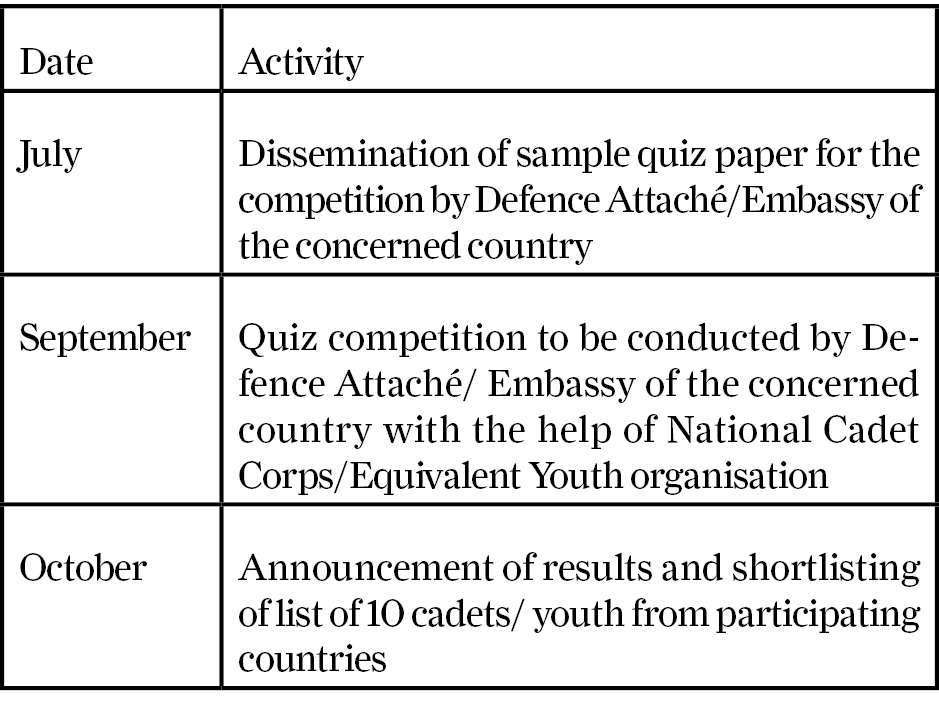
To ensure safety of the youth participating in the program, all protocols and safety aspects of COVID-19 will be followed. It is being requested to the concerned countries that all the cadets visiting India are fully vaccinated and have health insurance.
The NCC India has always proved to be a medium of national integration as it brings the youth from across the country on a common platform and channelises their potential to build a great nation. This mega youth exchange programme is expected to promote cross-cultural exchange of ideas among the participating youth, promote understanding of international cultures, tolerance and develop appreciation for universal ideals of brotherhood and social cohesion. They will also learn about education, ethnicity and lifestyles of different countries. The aim is also to promote greater awareness among youth of other countries about India, its rich cultural heritage, its people and the country’s achievements in the last 75 years.
Published
28 mins agoon
July 3, 2021By
Ashish SinghThe first production lot of 12 Short Span Bridging System (SSBS)-10 m, designed and developed by Defence Research and Development Organisation (DRDO), has been inducted into Indian Army by Chief of the Army Staff General M.M. Naravane during a ceremony held at Cariappa Parade Ground, Delhi Cantt. on Friday. Secretary Department of Defence R&D and Chairman DRDO Dr. G Satheesh Reddy was present on the occasion.
The SSBS-10 m plays a crucial role of bridging the gaps up to 9.5 m as a single span providing a 4 m wide, fully decked roadway, ensuring faster movement of the troops. Research & Development Establishment (Engrs) Pune, a premier engineering laboratory of DRDO, has designed and developed the system in association with M/s L&T Ltd. The 12 bridges are part of 102 SSBS-10 m from M/s L&T Ltd, which is the production agency.
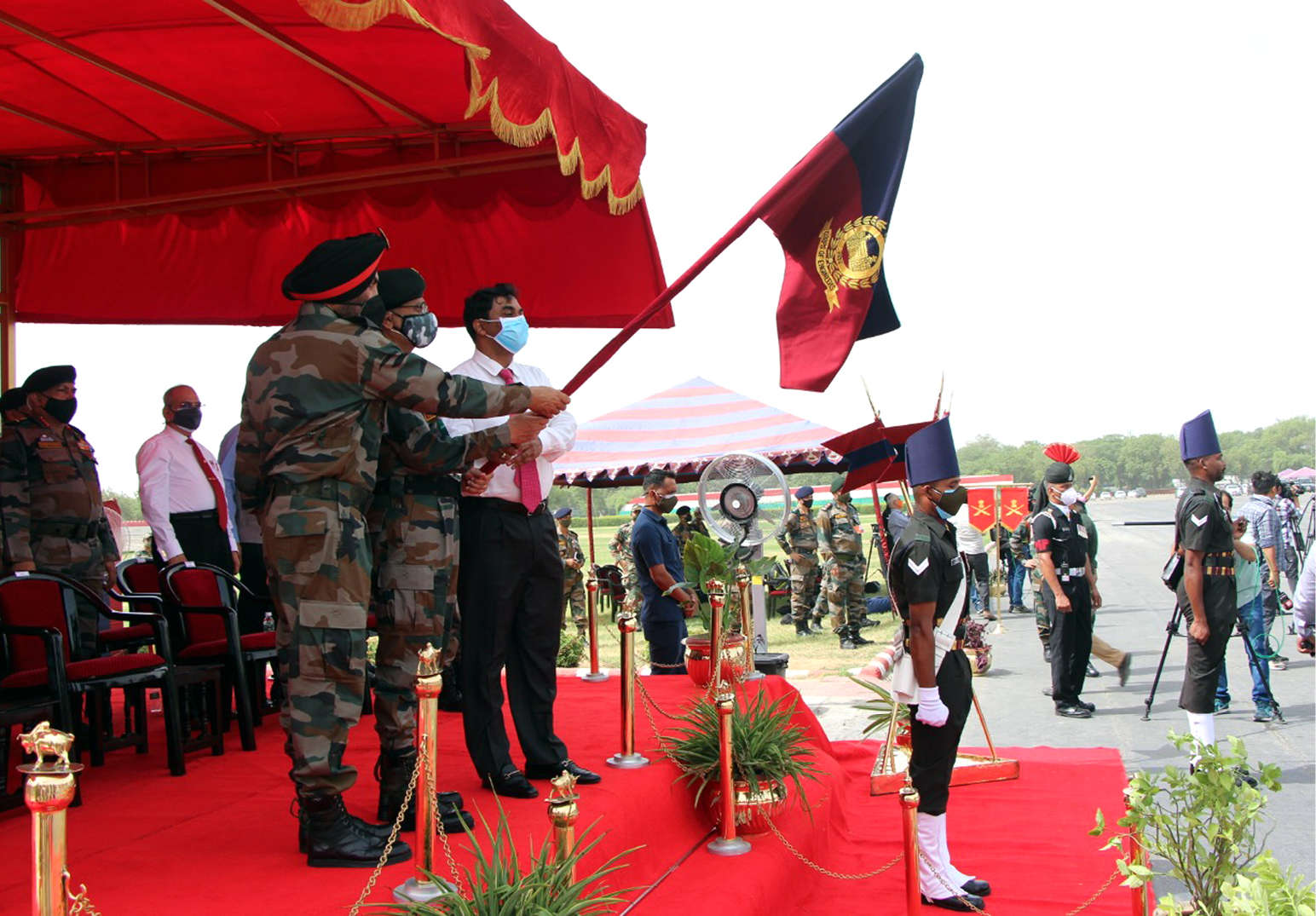
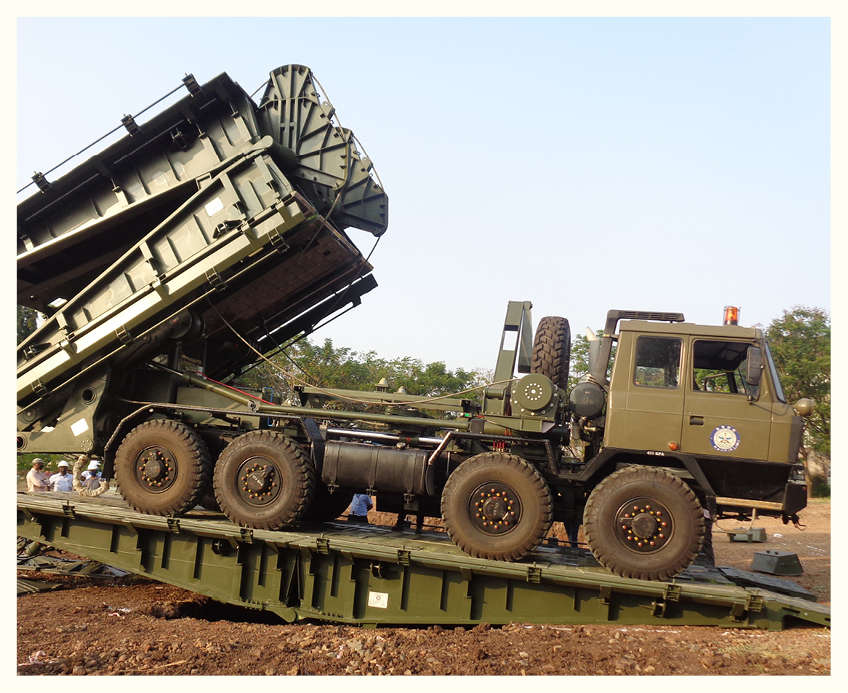
The Project Short Span Bridging System involved the development of two prototypes of 5 m SSBS on Tatra 6×6 chassis and another two prototypes of 10 m SSBS on Tatra 8×8 re-engineered chassis. Both the systems have undergone rigorous Directorate General of Quality Assurance (DGQA), MET and User trials and after successful completion of all the trials, the systems were recommended for induction into the services. This bridging system is compatible with Sarvatra Bridging System (75 m), where the last span requires covering gaps less than 9.5 m. The deployed bridge is of the load classification of MLC 70. The system will help in quick movement of troops and enhance the mobilization of resources.
The DRDO has vast experience in developing critical combat engineering systems like Military Bridging Systems. Number of mechanised mobility solutions for the Indian Army like Single Span 5 m and 10 m, Short Span Bridging System, 46 m Modular Bridge, 20 m BLT-T72 and multi span 75 m Sarvatra Bridging System etc. have been developed. Manually launched 34.5 m Mountain Foot Bridge was also developed by DRDO earlier. These bridges have been widely accepted by the Indian Army.
Defence Minister Rajnath Singh has congratulated DRDO, Indian Army and the industry on the successful development and induction of the system. He stated that this induction will give a boost to the fast-growing Indian defence industrial ecosystem and help the industry to contribute towards ‘Atmanirbhar Bharat’. Chairman DRDO Dr. G. Satheesh Reddy congratulated the teams involved in the successful development and induction of this bridging system into the Indian Army.
It is well-known that while the Army and Navy are fully onboard with the concept of ‘theatrisation’, the IAF still has certain reservations. These reservations were always there and have only resurfaced. The public impression being generated is that there is no solution except ‘shoving it down the throat’ and to implement it by date soon.
Published
1 day agoon
July 2, 2021A high-level committee of the Vice Chiefs of the three Services, the Chief of Integrated Defence Staff , and representatives of other Ministries are to undertake wider consultations to implement Theatrisation. It is well known that while the Army and Navy are fully onboard with the concept of Theatrisation, the IAF still has certain reservations. These reservations were always there and have only resurfaced. The public impression being generated is that there is no solution except ‘shoving it down the throat’ and to implement it by a date in the near future. Such a thought is detrimental to national security and should not even be contemplated. The need is for an unified warfare strategy, jointness in operations and integration of assets and forces. To achieve that, every component needs to be on the same page. We should be clear that that the outcomes of Theatrisation must be better than now. Otherwise we will be better off as we are. Hence the nation needs to be cognisant of the concerns of the IAF. There is a need to examine the main concerns of Theatrisation and to address them professionally.
The main concern of the IAF is well intentioned and partly genuine. The basic tenet of air power is to use it in a concentrated manner. It should not be frittered in penny packets. This is especially valid since the IAF is at a depleted strength and force multipliers like AWACs, AEW &C aircraft and flight refuellers need accretions or are due for major refits. It has been suggested that the answer lies in augmenting IAFs strength first. In the interim, the ORBAT needs reorganising such that the limited force can be brought to bear on targets effectively. Augmenting the IAF strength is a long term issue and Theatrisation cannot wait for that. The answer lies in reorganising the ORBAT and adopting a flexible but joint approach in deployment and employment of Air Power. As much as the flexibility is required in the IAF, there is a greater flexibility required in the Army. In fact if there are structural flaws in the Army need correction lest they are carried into a higher system.
Any long range firepower either based on direct propulsion (guns, rockets and missiles) or indirect propulsion (aircraft – manned and unmanned) is always at a premium. Also, as the range of action and effect increases the requirement of centralised control also increases. The longer the range , the lesser such assets are available due to sheer limitation of numbers. High costs and complexity of operations are also contributory factors. Hence they have to be deployed, employed and controlled centrally (initially at least). Command and control of these assets and task execution can be delegated as the battle unfolds. Firepower must be concentrated at a point in time and space to ensure overwhelming local superiority so that the situation is comprehensively addressed. Further, air assets which extend reach like refuelers or bestow strategic mobility and capability like heavy lift aircraft or enhance battle field transparency like surveillance , AWACs and AEW aircraft definitely need centralised control. In effect, certain air assets have to be under central control, no matter the situation. In this entire business of jointness, we must build flexibility. That is what seems to be missing in the entire approach to Theatrisation. I will explain the issue through the way Artillery Divisions are operational in the Army.
The Artillery Divisions in the Army have two gun brigades and one composite brigade which has long range vectors. Fundamentally the formation is a theatre resource but is placed on the ORBAT of a Strike Corps. However when it comes to application of its firepower, it is the theatre commander who uses it centrally based on his considerations. In the initial stages of the battle, these assets are placed ‘in location’ to the Pivot Corps. They are also re-deployed and employed for the tasks of the Pivot Corps , on a need basis. While the gun brigades get deployed and can be utilised for Pivot Corps tasks as allocated; invariably, the long range vectors are used for theatre tasks. Interestingly, all theatre level tasks are carried out in conjunction with the IAF based on a joint plan and jointly evolved target folders. Their deployment and employment is totally centralised. As the battle progresses, the Strike Corps swings into action. The gun brigades normally redeploy for the offensive. Even then their employment is controlled at the highest level. The long range vectors could get allotted to the Strike Corps in part, but will always be poised for theatre tasks. The essence of the whole story is flexibility, coordination, and cooperation through concepts like ‘in location’, ‘dispersed deployment’, ‘centralised control’, ‘multiple tasking through multiple assets’ and so on. The requirement is to develop jointness conceptually. It is not as if the IAF will get frittered away in penny packets if Theatrisation takes place. We need to evolve joint procedures of command and control in a theatre. We need new and forward thinking.
The crux of the problem is more cultural and psychological in nature. Last year, even before the Eastern Ladakh faceoffs started, I had foreseen the issue and outlined it in an article titled ‘Prickles of Theatrisation of Commands’. We are looking at how to meld two extremes. On one extreme we have an Air Force ‘dashing flyboy’ leadership which rarely identifies with its men. On the other extreme, we have an Infantry predominant ‘boots on the ground’ Army leadership which cannot look beyond its men, its lanyards and deep-rooted regimental affiliations. They have a lot in common. Both have good intentions and have done well for the nation. However, they both feel they are the ‘ONLY’ in their respective systems and the rest are appendages. They have a fixated concept of how war is executed, no matter if it is not relevant to the times. A bit of the lone ranger mentality. They both have exhibited a clannish penchant for cornering goodies of their respective forces at the expense of others. They are extremely good at handling advanced technologies but poor at developing them. They refuse to understand each other. How these two extremities are made to shed their inhibitions and come together on a common platform to work jointly and serve under each other is a great challenge. Both need to be brought to the centre of the road’. The Infantry dominated Army leadership wants to see the effect of air power in its visual range which is more suited to the close battle. This outlook has been further conditioned by the close encounters during excessive commitment in CI ops. Overall, the Indian Army has veered towards the ‘close battle’ mentality in recent years. The outlook of IAF leadership is unfettered by visual sight and looks deep. It believes in the depth battle. Its main fear is that air power will get divided and committed into penny packets and frittered which will lead to its eventual marginalisation. It could also result in a close battle focus at the expense of the depth battle. Penny packeting might also result in aircraft lying idle when required elsewhere. There is an old maxim – Guns are never left idle. Similarly, in war, a nation cannot let its airpower lie idle. It could be catastrophic.
The bridge between the two is Artillery which traditionally understands the close battle, has experience in CI ops next only to the Infantry and also thinks deep. With the growth of long range missile and rocket content the Artillery straddles both the spaces. Its traditional role of once merely neutralising the enemy, had morphed to destroying the enemy during Kargil War. It is now transforming to a higher level – deterrence based on extended reach in depth. However the structural problem is that the Artillery has been side-lined systematically in the Army. It is reduced to a support status with no voice due to many reasons; which are not fully professional. As a result the presence of Artillery in the leadership hierarchy is minimal and marginal. The cannons of India are no more the locks and keys of the nation. In this situation it is for the government to take a review holistically. It is beyond the actors in this theatre to rectify the situation. They are the problem in the first place. The solution lies in what Winston Churchill said ‘Renown awaits the commander who first restores Artillery to its prime importance on the battlefield’. As much as the Armed Forces need jointness and integration, the Indian Army leadership needs structural reformation. A re-look at the Infantry oriented ‘General Cadre’, which is now detrimental to the organisation, is warranted. Unless that relook is taken, forcible Theatristaion will be counterproductive to the nation. The snake will then start to eat its own tail. Indian Army is in a state of leadership and thought imbalance.
Let me highlight with a personal experience. As a GOC of an Artillery Division, I had occasion to work closely with the IAF. In a major operational exercise based on the deserts, I was once briefing my COAS, GOC in C, and the Corps Commander. The AOC in C was also in attendance. I was putting forth a plan which I could sense was not being well received. At that time it was the AOC in C who saw merit in my point of view and quizzed me pointedly and repeatedly. He drew out from me to what I was propounding for everyone to see light. Suddenly after a few leading questions a joint understanding and plan emerged to all round satisfaction and benefit. It developed synergy beyond my own belief. The role of the Artillery Division changed from being a mere provider of firepower to one of shaping the battle field and influencing operations along with the IAF. That kind of a thought process has to be instilled if we desire Theatrisation. IAF cannot be used as traditional Artillery in a support role. Nor can modern Artillery be used in a traditional role. The thinking has to change. In my opinion, the Artillery Division is to mountains what an Armoured Divison is to the plains. It promotes manoeuvre and reach into the depth. Along with IAF, it will provide a potent offensive capability in depth. However that realisation has not dawned in the Indian Army for a variety of reasons.
It is also well known that the IAF squadron strength is depleting. While all efforts are being made to make them up, it will not happen in the next decade. We must fight with what we have is the common refrain. However, ‘Airpower’ is not aircraft alone. It includes missiles and rockets also. There is whole new dimension of unmanned airpower opening up. So, look at it comprehensively. Iran relies on missile based airpower in the absence of a viable air force. Long range precision fires is a priority program of USA. China has deployed long range rockets and missiles in Tibet to offset their lack of airpower in Eastern Ladakh. All these pointers can be ignored at our peril. In the situation we are in, there is a need to increase the inventory of long range missiles held by the Army to bridge the gap due to lack of aircraft. India has the wherewithal, technology and production capacity to do so. It is undoubtedly cost effective. However to make it happen, it needs joint thinking and planning. That is not happening since the Army and IAF are not looking in the same direction. A redressal is needed in this sphere.
One might conclude that I am based and am propagating the case for ‘Artillery’ being a Gunner. However my argument is based on professional reason and facts not filial affiliations. In case we do not have the Artillery bridge in place in the correct slot, we will be destined to fend off the Chinese at short ranges as we have done so now and be ready to redress the situations they create along the LAC and elsewhere in future. The requirement is to keep them at ‘standoff’ through the IAF and Long Range Artillery. If needed we can fight them at short range with our indomitable Infantry, Armour and tube Artillery. It is not that I love my Infantry or IAF less, it is that I love my nation more and am being upfront. Our Infantry and IAF are great but cannot see eye to eye. Hence I have put across facts as they are. Theatrisation by force or by political edict or by majoritarian outlook will take us back to the philistines. There are sensible and logical ways forward on Theatrisation so that we can fight as a single entity across the length and depth of the battlefield. We need to have the mental flexibility and sagacity to do so resolve this core issue of Theatrisation. If we can do that, we are on our way.
PS :- I have no personal issue with any Infantry or IAF officer. In fact many have been my mentors and are full of wisdom.I respect them. Many will also ignore me as noise. However unless reason is seen we will face serious consequences.
Lt Gen P.R. Shankar was India’s DG Artillery. He is highly decorated and qualified with vast operational experience. He contributed significantly to the Modernization and Indigenisation of Artillery. He is now a Professor in the Aerospace Dept of IIT Madras and is involved in applied research for defence technology. His other articles can be read on www.gunnersshot.com
The crux of the problem is more cultural and psychological in nature. Last year, even before the eastern Ladakh face-offs started, I had foreseen the issue and outlined it in an article titled ‘Prickles of Theatrisation of Commands’. We are looking at how to meld two extremes. On one extreme we have an Air Force ‘dashing flyboy’ leadership which rarely identifies with its men. On the other extreme, we have an Infantry predominant ‘boots on the ground’, Army leadership which cannot look beyond its men, its lanyards and deep-rooted regimental affiliations.
Published
2 days agoon
July 1, 2021By
Ashish SinghA batch of 30 Recruit Religious Teachers (RRTs) was commissioned as Junior Commissioned Officers on Wednesday after a vibrant Passing out parade held at the Institute of National Integration (INI), Pune.
Brigadier Hardeep Singh Dhodi, Commandant of Institute, reviewed the parade and awarded General Officer Commanding in Chief, Army Training Command gold medal and INI Commandants silver medals to Nb Sub Vikram Sharma of Punjab Regt and Nb Sub Gurpreet Singh of Armd Corps, and Nb Sub Mohd Talha of Rajput Regt respectively who distinguished themselves in varied facets of 11 weeks of intense training.
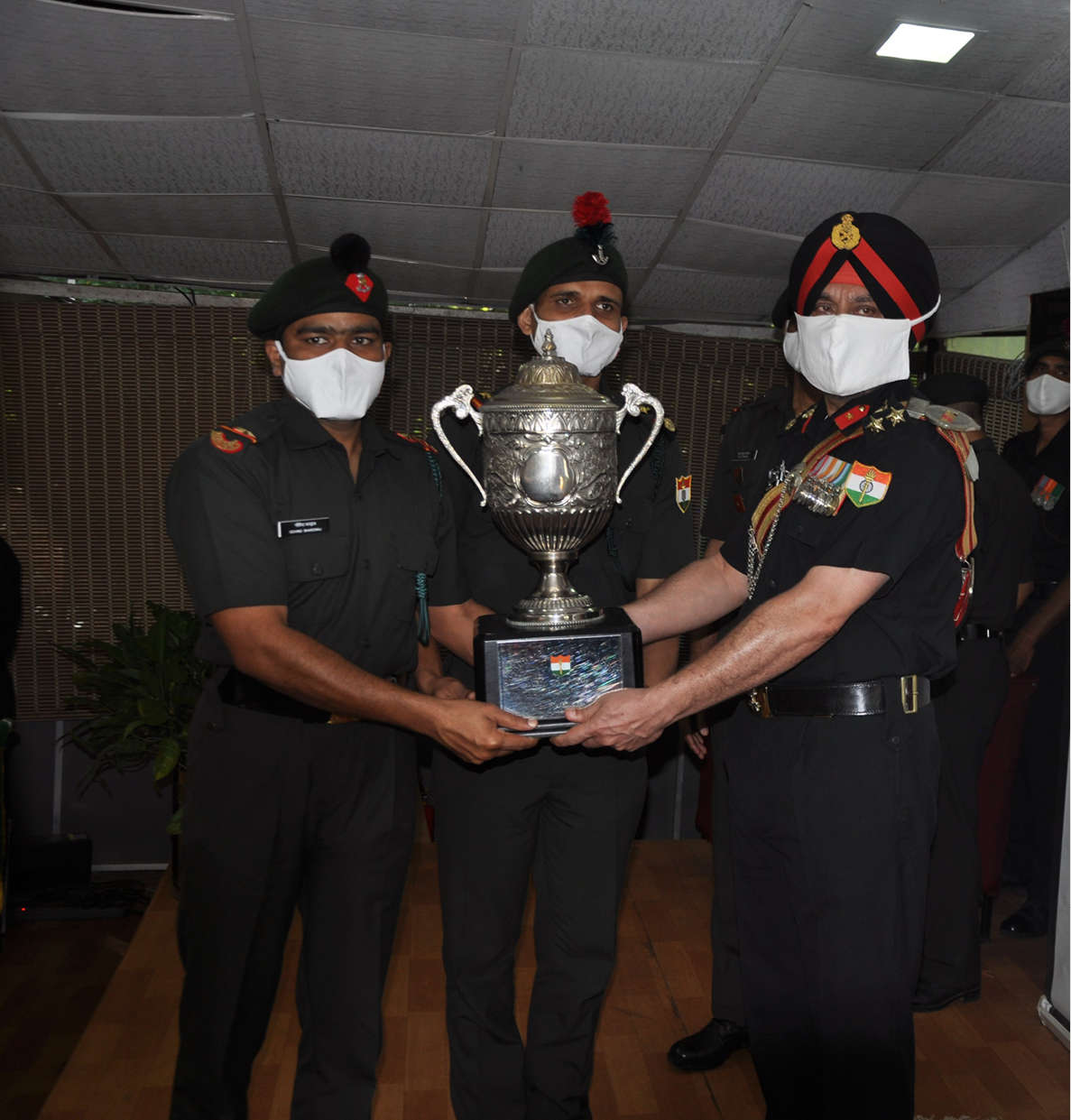
The Commandant congratulated the commissioned JCOs for successful completion of pre-commissioning training incorporating subjects related to national integration, behaviour and social Science including spiritualism, yoga, psychological counselling and stress management.
The RRTs passing out from INI are ready to perform assigned duties of ‘Dharam Guru’ as also shoulder additional responsibilities of a Psychological Counsellor and Mental Health Mentor in times of stress-related environmental dynamics, across varied and harsh terrains along northern and eastern borders.
The Commandant further reiterated that these RRTs indeed play a crucial role towards building up morale and motivation amongst troops and their families, to serve as a catalyst to ensure Unit’s cohesion, thus contributing to battle-winning ethos prevailing in units.
Published
2 days agoon
July 1, 2021Two blasts were heard at Satwari Airport on the intervening night of 26 and 27 June 2021 at around 1:40 am and 1:46 am. These blasts must have shaken the hearts and minds of the people of Jammu city living nearby as the people of Jammu have suffered a lot of terrorist attacks in the past few years regularly. However, most of the attacks were ground-based fidayeen or IED attacks perpetrated from across the border. The Jammu airport is situated in the heart of Satwari cantonment with the airbase being surrounded almost on all sides by units of the Indian Army. This is one of the major reasons why it is very difficult to attack the Jammu airport by ground infiltration. It is probably, because of this constraint that the terrorists, most likely from the LeT targeted the Air Force base by the aerial route. The blast took place near the helicopter dispersal area, damaging the roof of a building nearby and causing minor injuries to an Air Force warrant officer and an airman. The attack was probably carried out to destroy a helicopter parked in the dispersal area.
POINTS OF CONCERN
It is normally seen that we have always been reactive in our response be it in a conventional or unconventional domain. And once an attack takes place there is an overreaction to take remedial measures without due diligence and thought. For example following the attack on the Sanjuwan garrison in Jammu on 10 February 2018, almost all the military stations in the country went on an overdrive to install protective measures. However, in so doing we ended up overspending the already scarce and valuable resources available with the country and the defence forces. We could have been more pragmatic and economical in our effort. Similarly, even after clear indicators of a possible drone threat, we did very little about it and ended up getting surprised. For example, many Security Experts such as Lt Gen Shankar, (Retired) former DG Arty including me have written on this threat last year following series of drone attacks in several countries such as Iran by the US, Syria, and Saudi Arabian Air Base and Oil facilities.
Drone attacks have become a preferred choice of weapon and as late as 22 April 2021. Iran backed Houthi rebels targeted the Saudi Arabian Oil facilities and military airbase. But these attacks evoked very little concern or preparatory action in our country. Even in our country as per official data the Indian security forces have recorded at least 250 sightings of drones on the Western front with Pakistan since 2019, and at least two drones have entered India this year before the Jammu attack on Sunday, according to the official data. So while the security forces are making efforts two drones had defeated our surveillance network which should have prompted airbases close to the borders to be prepared against such threats especially since it was happening elsewhere in the world as well. We need to be mindful of our attitude towards security threats facing the country. The Jammu drone attack is a very cheap and safe method for attacking such airbases. If the attack was successful then we would have suffered a great loss as well as India’s reputation would have taken a hit.
LIKELY VARIATION IN THE ATTACK IN THE FUTURE
The drone used was probably a P16 drone. Such drones are man-portable, and they are very difficult to detect by radar. The attack would have caused even more serious damages if it had been a high explosive mixed with incendiary material as used in the Pathankot Airbase attack. As I was personally involved in the conduct of the counter-terror operation in the Pathankot airbase incident, I can visualise the consequences of an attack with a cocktail of HE and incendiary material. The secondary damages are even more devastating. We need to be careful of such cocktail explosives which may be used in the future.
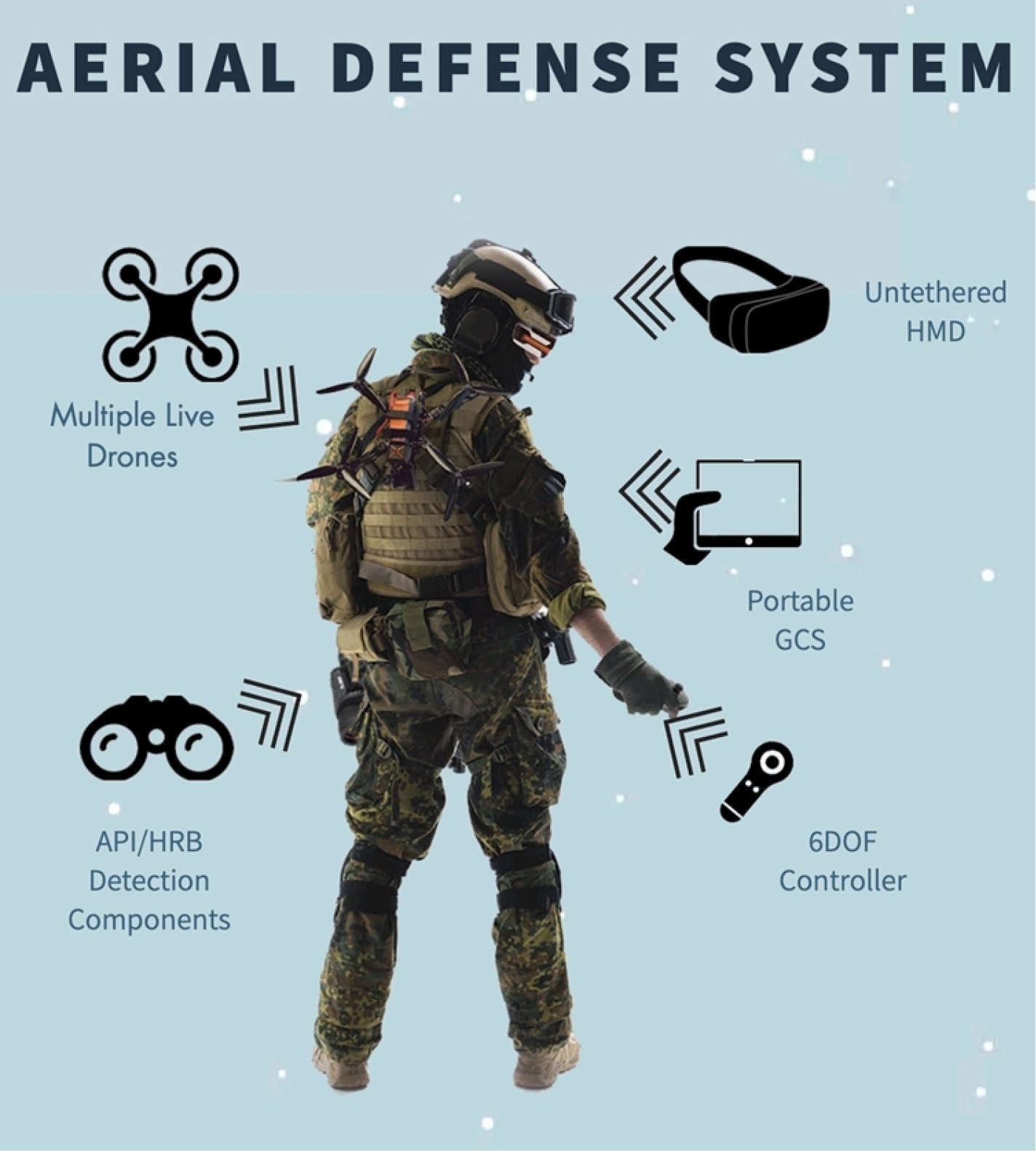
Another aspect that worries me is the possibility of using a large number of drones simultaneously (swarm drones) to place such explosives and detonating them either remotely or by a timer mechanism in the golden hours of the night when the security personnel are the least alert. It has also been seen that many times drones enter the target with their explosives, we also call such an attack a KamiKaze drone attack. In the Second World War, Japanese pilots deliberately crashed their aeroplanes into large ships so that that ship would be destroyed at any cost. Further such attacks will be more on the airports along the India and Pakistan border such as Srinagar, Udhampur, Jammu, Pathankot, and Amritsar. Terrorists can also drones to transport weapons and logistics through such drones so that they can enter India without weapons through proper disembarkation points and later marrying up with their contacts in J&K or elsewhere to undertake terror attacks.
THE WAY AHEAD
Such attacks are happening in the world for a long time. These attacks are being carried out by both state and non-state actors, but it is the first time that an Indian military airbase has been targeted. America, Russia, Israel, China and Turkey are experts in the use of drones. America has killed many terrorists by a drone strike in Afghanistan. Similarly, Turkey has successfully used them in the wars of Syria, Azerbaijan-Armenia. Surveillance, intelligence, integrated air defence and spot or point defence are highly needed to thwart such attacks. It has often been seen that due to the monotonous work of the security personnel especially while undertaking defensive duties which result in laxity and becomes the cause of a likely terror attack. Also, our intelligence system is very weak, especially Human Intelligence. The next major weakness has been the need for surveillance over our sensitive installations and bases. To improve our over the installation surveillance capability we desperately need low-level radars and modern night vision equipment. Another matter of concern is that our sensitive bases are often deployed by personnel from the Defence Service Corps (DSC). These jawans are very honest and obedient given their army background but their age comes in the way of their duties especially in the forward areas of the country. Therefore, the Air Force may like to raise a special force to be deployed in forward air bases to back the effort of the DSC. Apart from this, once we detect drones, we should also have the ability to shoot them down. In such a situation, spot defence or point defence becomes very important. To thwart drones, we can use electronic systems such as jammers. A modern jamming system is being tested in South Korea that can neutralise such small drone attacks. Similarly, Britain’s Bright Star Surveillance Systems has launched a new radar in September 2020 named A 800 3D. It can detect small commercial and hobby drones. According to experts, it can easily be included in border management and military systems. The US is also working on a high energy laser system that can destroy and thwart such drones. Similarly, Israel and America have jointly made a system to destroy the drone threat by another drone. In this system, the defensive drone has a net that traps the enemy drone in it and renders it ineffective. The name of this system is Sky-lord.
SKYLORD ANTI DRONE SYSTEM
India will take a lot of time to develop or procure high tech counter-drone systems. Till then, we should try to destroy them with rapid-firing machine guns. Although this is not such an effective method if given the right training it can be fairly good. Airborne threats must be dealt with in an integrated manner. To a large extent, especially against Swarm Drones, we will have to protect ourselves by traditional air defence methods.
In the end, in my opinion, we can also compare drone warfare to aerial guerrilla warfare. Therefore, we need to respond similarly but for this our air and ground surveillance measures have to be good. Similarly, there is a need to focus on developing a strong intelligence network in the areas across the border and around the various sensitive installations such as Ammunition Dumps, Fuel Dumps, Supply Dumps, military cantonments and air bases. The mantra of success against such forces is to focus on SIT (Surveillance, Intelligence and Targeting).
Lt Gen Dushyant Singh (retd) has served in varied terrains and theatre of operations, in India and in the UN as Military Observer. He has commanded an Infantry Battalion, Brigade and a Division in Jammu and Kashmir. He was Command of Corps Chief of Staff Eastern Command and Commandant Army War College. He is currently Professor Emeritus Defence Studies at Gujarat Raksha Shakti University. Twitter handle: @dushy40098.